Welcome to the final article in this series, How To Practice Creatively! If you’ve read all of the previous articles in this series, you may be wondering why I saved “Identifying the Problem” for last. That’s because this is the longest and most involved part of creative practicing.
Finding creative solutions is the most engaging way I know of practicing. I wish I had been taught this much earlier, but either I didn’t connect the dots in my lessons, or I simply wasn’t given the information at the time. Either way, it’s taken many years to compile a list of things that you can do to address different issues you’re encountering in a piece of music. But more than that, it’s the principles behind those techniques that really have impact and allow you to apply them to different, but similar issues in other pieces.
One of the first steps in troubleshooting is to first be able to identify the problem. If you don’t know what the problem is, you’ll most likely end up solving something that doesn’t need fixing, while the real problem goes unresolved – talk about a time-waster! It makes sense, then to learn how to clearly identify the problem you’re having in a passage. And in order to do this, you need perspective.
Getting Some Perspective
Let’s say you see a picture of a sculpture online. It’s a wonderful picture, it’s large and in full color taken when the sun is out, so the shadows cast allow you to see the details. But it’s nothing like when you get to see the sculpture in person. In person, you get to see it from all different angles. You get to see how large or small it really is. You can also see it at different times of the day and see the different shadows that are cast. You may even be able to get close enough to see extreme details in the stone, and even feel its smoothness or roughness. You get to see its impact on the scenery around it.
Compare these two photos of the same sculpture:
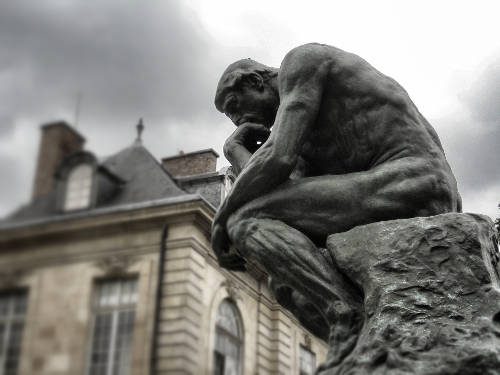
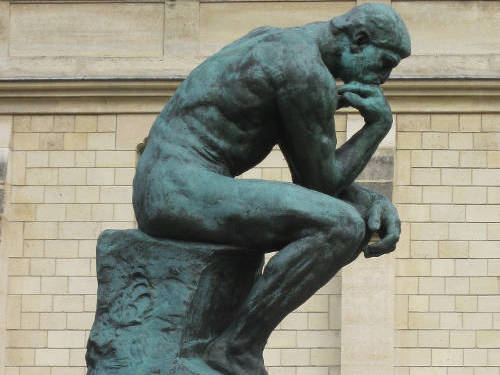
It’s obvious they are the same sculpture, but look how different they are! If you only saw the first photo on the left, would you even know it had the green patina? Would you know what his fingers look like? Would you have known that his right elbow rests on the inside of his left leg?
Like looking at a picture of a sculpture vs. seeing it in person, seeing your problem areas from many different angles will give light as to what exactly the problem is – and thus point you in the direction of possible solutions.
It is this kind of detail that creative practicing does to a piece of music. In the mind-numbing repetitive kind of practice, it’s like looking at the photo in the magazine over and over and over again. Sure, you can study it that way and learn what you can about the sculpture from that photo, but what you learn is very one-dimensional and only gives you a glimpse of what it really looks like.
When you practice creatively, it’s like seeing the music for how it really is: its every detail, the underlying harmonies come to life, the context of the individual notes and how they imply harmony, what the overall form means. It’s looking at each passage in many different ways, like looking at that sculpture from upside-down, sideways, backwards, or looking at just the hands of the sculpture, or just the face. By examining the details under different conditions, you get a better understanding of the whole.
Creative Practicing
Creative practice is not, however, just going at something willy-nilly any which way possible. It is imperative that you choose practice techniques that directly apply to the properly-identified problem or task (see #1 Focused Practice on identifying the problem areas). If you are having difficulty in playing a series of 4 arpeggios in a measure that covers chords C in root, C 1st inversion, C 2nd inversion, and C root the 8va higher, you need to answer the question: why is that a problem, or what exactly is the problem? If your answer is you are feels tense, then the problem could be that your write is fixed and not leading the fingers toward the next note. Or it could be that you’re not able to transition to the next inversion properly because your hand is still in the previous chord position. Or it could be some other cause. And each reason for the problem may dictate a very different solution.
No matter how many times you apply practicing in rhythms to a problem that requires a better technical understanding of arm weight, or one that doesn’t address the true problem of a finger joint collapsing slightly, or having poor posture at the piano – it’s not going to have the effect that you want. It may help peripherally, but until you can properly identify the problem it will be a guessing game.

Playing It Wrong – On Purpose!
So then what does it mean to practice “creatively”? Most of the time, it will entail taking what’s written and temporarily practicing it wrong on purpose. Now before you start thinking that playing something wrong on purpose will forever burn it into your mind as incorrect, let’s think about what that means. If you do something that you consciously know is wrong or “pretending”, you’re not going to treat the same way as if you were trying to learn something right or “for real.” Since it’s temporary, you will discard it once it serves its purpose.
The best way to come up with creative ways of playing something “wrong” is to try opposites. If the passage is legato, try playing it staccato. If it’s forte try playing it piano. If it’s fast, try playing it slow, if it’s slow, try playing it fast. You get the idea.
Another great way to look at music is to temporarily simplify what’s written. Break it down to its bare components. This could mean only playing notes on the beats and leaving out the “ands” and “e-and-a’s”. Or maybe you leave out the notes on the beats and play the others! Or you could practice in rhythms (swinging rhythms, bursts of 3 and 4 notes with pauses in between), or chunking the music together, playing a bunch of notes all at once.
Really there’s an unlimited number of things you can do, and as long as you are focused on addressing the actual problem, it will help. You don’t even have to be able to play your “pretend” way very well. Sometimes you just need to be passable at it from trying it a few times in a row. Then you go back and play it as written.
When you practice creatively, it’s like seeing the music for how it really is…like looking at that sculpture from upside-down, sideways, backwards, or looking at just the hands of the sculpture, or just the face.
Gauging Progress
Sometimes you’ll notice improvement right away, other times you’ll either decide that you should try something else if there was no progress. Sometimes you’ll have to do this over a period of days before the problem improves. So don’t be hasty with giving up if you don’t have improvement right away. Try it again the next day after sleep and see if it helped.
Believe it or not, this way of practicing really engages the mind and can be quite fun, especially after you see how quickly you can improve. But it does take experience over many years to really be able to identify the problem. So if you’re a beginner, be sure to ask your teacher at your lessons what the problem is you are having, and then demonstrate it for them. Have them walk you through specific things you can do to resolve the issue. In this way, you will learn to develop a better understanding of your body and how to identify problems and arrive at effective, creative solutions.
This aspect of learning piano is probably the most difficult to self-teach since you must be able to assess what’s wrong and then use creative practice techniques to then focus in on the problem. If you don’t have a teacher, I do offer Skype lessons, or feedback via video submission lessons.
Well, that’s the end of my Creative Practicing series. I hope you found some helpful bits of information that will transform your piano studies! Please feel free to comment below on any questions or problems you are encountering in your practice time. Happy Creative Practicing!

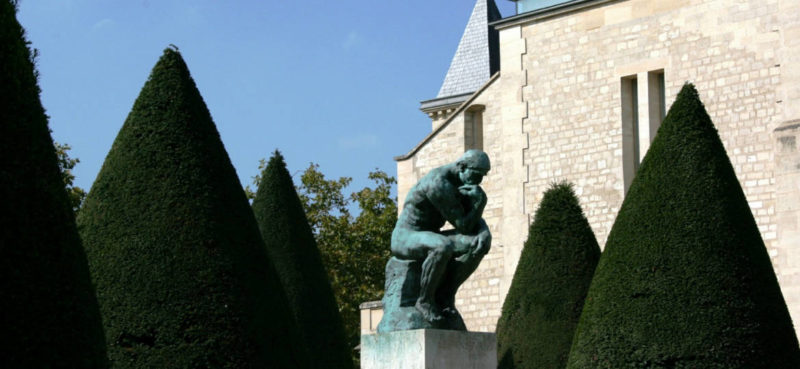
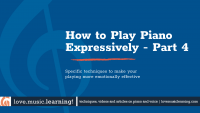
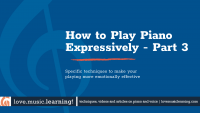
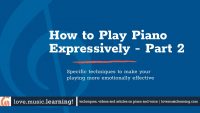
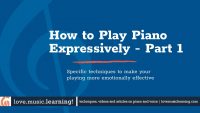
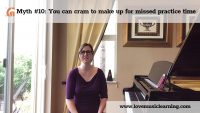
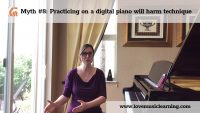
Leave A Comment
You must be logged in to post a comment.